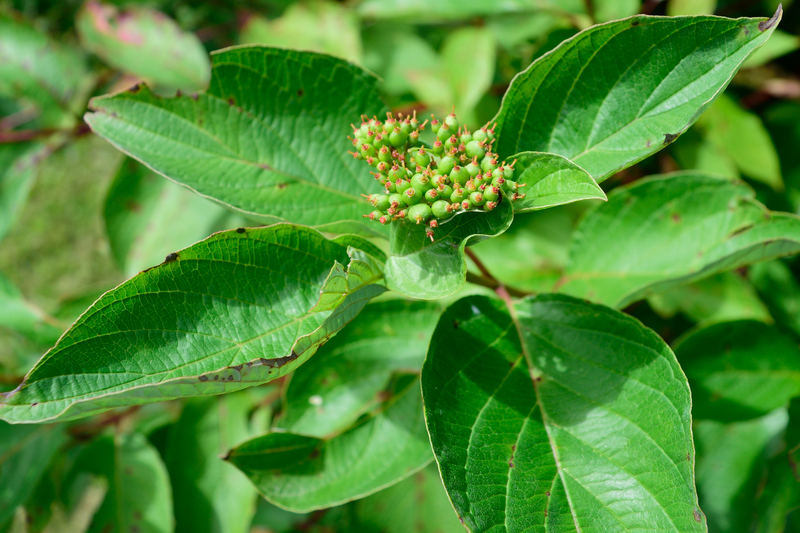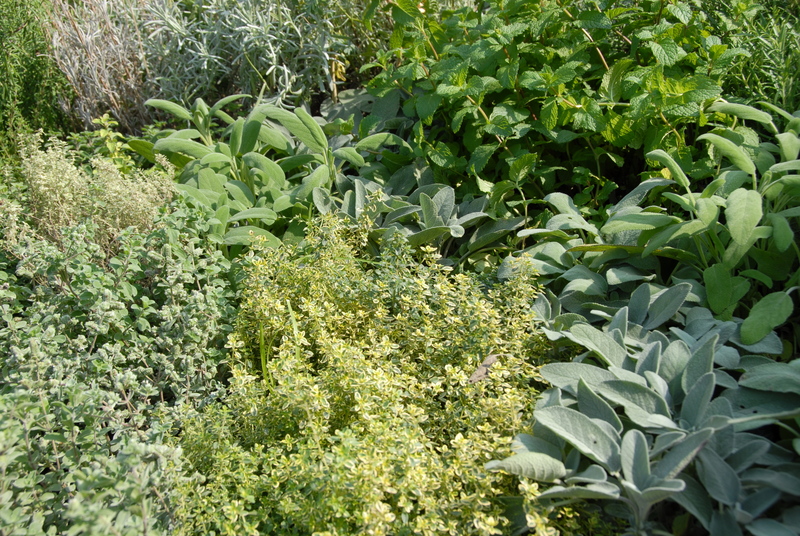Saving Garden Gems: Winter Weather Precautions for Homeowners
Every gardener cherishes their garden gems--the special plants, thriving vegetables, lush shrubs, and ornamental features that transform yards into natural sanctuaries. But as the days grow shorter and temperatures drop, winter weather poses new challenges. Protecting your garden from winter harm is essential, and with some thoughtful precautions, you can ensure your cherished green space emerges strong and vibrant in spring. This comprehensive guide will delve into proven strategies for saving garden gems during the cold months, covering everything from plant care and soil health to structure preservation and winter tool maintenance.

Why Winter Protection for Gardens is Crucial
Winter weather brings more than just frosty mornings. Freezing temperatures, strong winds, heavy snow, ice storms, and de-icing chemicals can have devastating effects on both fragile and hardy plants. Understanding how winter impacts your plants is the first step in developing an effective protection plan. Some species go dormant and tolerate cold, while others are vulnerable to frost damage, moisture loss, and even root death.
- Frost and Freeze: Sudden temperature drops can rupture plant cells, causing leaf burn and even killing off stems or roots.
- Dehydration: Cold, dry winds and frozen soil limit water uptake, leading to winter desiccation--a common killer of evergreens.
- Snow and Ice Damage: Accumulated snow or freezing rain can bend, snap, or even uproot branches and young trees.
- Soil Compaction: Repeated freezing and thawing can disrupt root systems and decrease soil aeration.
- Animal Activity: Rodents, rabbits, and deer may feed on bark, twigs, and bulbs when food is scarce.
Garden winterization is not just about protection--it's an investment in your landscape's longevity. Let's explore the precautions you can take now to ensure your garden gems survive and thrive through winter's toughest challenges.
1. Assess and Prepare the Garden Before Winter
Garden Evaluation Checklist
Begin by surveying your yard and identifying plants or features that need winter protection. Create a checklist:
- *List vulnerable plants*: tropical annuals, tender perennials, young saplings, container plants, succulents
- Inspect structures and supports such as trellises, raised beds, and fences for winter stability
- Check for pre-existing damage from pests, diseases, or weather
- Locate and note areas prone to flooding or ice buildup
- Stock up on winter protection materials: mulch, straw, burlap, plant covers, garden fleece, stakes, and ties
Pruning and Cleaning
Late fall is the ideal time to:
2. Soil Protection and Mulching for Winter
The Importance of Mulching
One of the most effective winter weather precautions for protecting garden gems is proper mulching:
- Mulch acts as a thermal blanket, moderating soil temperature and preventing the freeze-thaw cycle that uproots plants.
- It conserves moisture by reducing evaporation during dry winter winds.
- Mulching suppresses weeds and helps decompose organic material, adding nutrients to your soil.
Best Practices for Applying Mulch
- Apply a 2-4 inch layer of organic mulch (shredded leaves, bark chips, pine straw, compost) around the base of perennials, shrubs, and trees.
- Keep mulch a few inches away from trunks and stems to prevent rot and pest infestation.
- Replenish mulch each autumn to maintain a consistent protective layer, especially in vegetable and flower beds.
3. Shielding Garden Gems from Harsh Elements
Frost Protection Strategies
For plants most vulnerable to freezing, take extra steps to insulate:
- Use garden fleece, cloches, or commercial frost blankets to cover tender annuals and young perennials overnight--remove by day to allow sunlight and airflow.
- Wrap small trees and shrubs with burlap or horticultural fabric to shield from icy winds and sunscald.
- Tender potted plants can be grouped together, sheltered on the south side of your house, or moved indoors to protected garages/porches.
- Build simple windbreaks using stakes and old sheets or snow fencing to buffer strong winter gusts.
Snow and Ice Management
- After heavy snowfall, gently brush snow from branches with a broom--avoid shaking, which can cause branches to snap.
- Never use salt or chemical deicers near your plants--these damage roots and soil health; use sand, kitty litter, or sawdust instead for paths.
- Inspect trees and large shrubs after ice storms for cracking--tie branches loosely with soft ties if needed for support.
4. Specific Plant Protection: Trees, Shrubs, and Perennials
Safeguarding Trees and Shrubs
- For young or thin-barked trees, apply tree wrap or anti-desiccant spray to prevent sunscald and moisture loss.
- Water evergreens and newly planted trees deeply before ground freezes; this reduces risk of winter burn.
- Scatter mulch generously around the base of shrubs and trees--this is especially crucial for roses, hydrangeas, and azaleas.
- Protect tree trunks from hungry rodents with wire mesh guards or plastic tree protectors.
Perennial Beds and Flower Protection
- Allow perennial foliage to die back naturally--*do not cut back until spring* for added freeze protection and beneficial insect habitat.
- For borderline hardy flowers and bulbs, add extra leaf mulch or consider covering with straw or evergreen boughs.
- If you grow tender bulbs (e.g., dahlias, gladiolus), dig them up after the first frost, dry thoroughly, and store in a cool, dark place until spring.
5. Vegetable Garden Winter Care
Winterizing Your Veggie Patch
- Harvest remaining vegetables before the first hard frost; remove plant debris to deter rodents and pathogens.
- Plant cover crops (such as winter rye or clover) to protect bare soil, fix nitrogen, and reduce erosion.
- Mulch heavily between rows and raised beds--this stabilizes soil temperature and enhances future productivity.
- For cold-hardy crops (kale, spinach, garlic), use low tunnels, cold frames, or plastic row covers for all-winter harvesting.
6. Garden Infrastructure: Structures and Tools
Protecting Fences, Raised Beds, and Decor
- Check wooden structures for rot and apply a protective sealer before winter moisture can cause swelling and warping.
- Store garden art, solar lights, and container pots indoors or in sheds to prevent cracking from freeze-thaw cycles.
- Tilt or elevate raised bed corners to promote drainage and reduce soil heaving.
Tool Maintenance and Storage
- Clean, sharpen, and oil all garden tools before storing for the season--this prevents rust and prolongs their lifespan.
- Drain hoses and irrigation lines; store them out of direct snow or sunlight.
- Disconnect rain barrels and secure lids to keep out ice or animals.
7. Wildlife Considerations in Winter
Helping Beneficial Wildlife
- Leave some seed heads, ornamental grasses, and leaf piles as shelter and food sources for overwintering birds and insects.
- Provide birds with unfrozen water by using heated birdbaths, and place feeders in safe locations.
- Locate brush piles in out-of-the-way corners to shelter frogs, beneficial insects, and small mammals.
Deterring Pests in Winter
- Store seeds and bulbs in rodent-proof containers.
- Install tree guards or fencing around valuable trunks and beds to keep out hungry rabbits and deer.
- Avoid attracting pests by removing any fallen fruit or unharvested vegetables before the freeze.
8. Planning Ahead for Spring Recovery
Once your winter garden precautions are in place, take measures to ensure a smooth transition to spring growth:
- Record which methods worked well and where improvements can be made next year.
- Order seeds and plan new additions or landscaping changes during the winter off-season.
- Monitor your garden periodically--walk the grounds after storms to check for issues and make quick repairs.
Embracing the quieter months as a period of rest and reflection will set you up for even more gardening success next year.
Common Mistakes to Avoid When Winterizing Gardens
- Neglecting to water deeply before the ground freezes.
- Using too much or too little mulch (avoid smothering crowns, but don't leave soil exposed).
- Leaving hoses or irrigation equipment outside to freeze and crack.
- Pruning at the wrong time, exposing plants to winter injury.
- Improper wrapping of trees--using plastic instead of breathable fabric can trap moisture and breed disease.
- Placing salt or harsh chemicals near garden edges or roots.

Frequently Asked Questions: Saving Garden Gems in Winter
Q: What is the best mulch for protecting plants in the winter?
A: Organic mulches such as shredded leaves, bark, pine needles, and straw are excellent choices. They insulate well, break down to feed the soil, and allow good airflow.
Q: How much should I water my garden before winter?
A: Give your garden a deep watering in late fall, especially for recently planted items or evergreens. Stop watering when the ground is frozen to prevent root rot.
Q: Can I use plastic to wrap my plants?
A: Avoid plastic for wrapping because it traps moisture, which can cause rot and encourage disease. Use breathable materials like burlap or special garden fabric instead.
Q: What if I forget to cover my plants and a freeze is coming?
A: At the last minute, you can use old sheets, towels, newspapers, or cardboard to cover plants overnight. Remove covers in the morning to let sun in.
Conclusion: Secure Your Garden's Future with Smart Winter Weather Precautions
Saving your garden gems through winter is about more than survival--it's about nurturing beauty, productivity, and sustainability for seasons to come. By investing time in winter weather precautions, from soil care and plant covering to wildlife support and tool storage, you'll ensure that your special plants, flowers, and trees return each spring healthier and more vibrant than ever. Don't wait for the first frost--prepare your garden now and enjoy the peace of mind that comes with knowing your garden gems are safe and sound all winter long. Happy gardening!
```